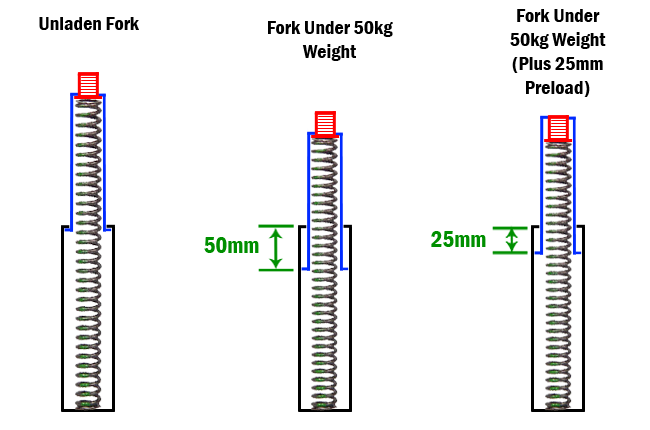Front Forks.
When adding pre-load, you raise the front as a natural reaction to the force being applied to the spring.
So can I just confirm the correct way to maintain geometry when adding preload is to pull the forks up through the triple clamp. (Or drop the triple clamp down the forks however you prefer to view it).
How do you calculate the correct drop for a given preload adjustment? Is there a simple rule of thumb? I assume it's based on the spring weight being acted on to start with.
(I will be added 2 turns of preload at Portimao as I keep smashing the zip tie flat, I don't intend to worry about the geo change but I do like to understand what is possible/what a pro would do).
When adding pre-load, you raise the front as a natural reaction to the force being applied to the spring.
So can I just confirm the correct way to maintain geometry when adding preload is to pull the forks up through the triple clamp. (Or drop the triple clamp down the forks however you prefer to view it).
How do you calculate the correct drop for a given preload adjustment? Is there a simple rule of thumb? I assume it's based on the spring weight being acted on to start with.
(I will be added 2 turns of preload at Portimao as I keep smashing the zip tie flat, I don't intend to worry about the geo change but I do like to understand what is possible/what a pro would do).
Last edited:



